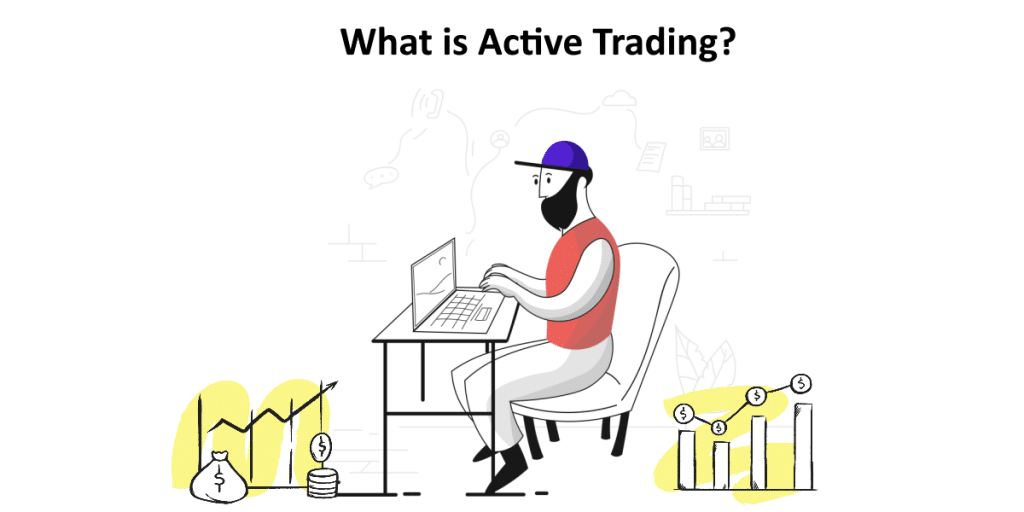If you are getting started with investing, you have probably heard the words “active trading”. You may be asking “what is active trading?” and how can it help your investment strategy?
Active trading is a specific form of short-term investing focusing on fast profits. Active traders have a lot of market knowledge, and they act quickly. There are many ways that active traders can operate to achieve success.
Follow our quick guide below to help understand the specifics of active trading, its advantages, and how it works.
What is Active Trading?
Investors choose between two main approaches to the way they operate. These are active and passive trading. Passive trading is when investors are in it for the long run. This is the process of investing in assets and waiting for them to accumulate in value over time.
Passive trading is safer and slower. You won’t make fast profits, but you will be able to generate stable financial growth over the long term.
Active trading is the opposite. This is the process of profiting off short-term price changes. Often, active traders start the day with no open trades, buy and sell assets throughout the day, and then close the day without any open transactions.
Active trading is an approach used for various products and markets. However, active traders are generally associated with stocks, futures, and forex. This is not the type of approach that you take for retirement savings and steady returns. Instead, this is a method you use for fast profits.
Active traders focus on trading in options that offer loads of volume in highly liquid markets. There are various techniques and styles that active traders use to open and close positions quickly.
Active trading is a high-risk high reward strategy. Many may argue that active traders will barely be able to outperform passive index funds. The main reason for this is that active traders have to pay exceedingly high commissions due to their high volume of trades. However, many active traders regularly outperform indexes and enjoy high returns.
Different Types of Active Traders
There is no strict definition of how quickly an active trader needs to close deals. Active traders come in various forms and can use numerous strategies. Even active traders that fall under the same category can trade in completely different ways.
The common idea is that trades are opened and closed quickly for profits based on quick price changes. Here are some of the main types of active traders and their strategies.
Day Trading
Day trading is a fast form of active trading where traders buy and sell securities within the same day. Day traders focus on specific events that impact the price of stocks and currencies.
To be a successful day trader, you need to have a strong knowledge of the markets and be able to act very quickly. Day trading is generally done on one, five, or fifteen-minute charts.
Scalping
Scalping focuses on very small shifts in price with a high trade volume to amplify the difference. These trades are made over the very short term.
Scalping often uses leverage available from brokers to increase their returns on very small price differences. Not all brokers agree with scalping.
Swing Trading
Swing trading is not always as speedy as other forms of active trading. This approach involves holding positions for a few days or weeks. Swing trading is focused on trends.
Traders will enter the market during a volatile period. They will hold onto the trend for some time, selling when the market rises again. This is still a short-term trading style, and it follows hourly or daily price charts.
Position Trading
Position trading is a longer-term approach to active trading. Many don't consider position trading a form of active trading, as it could take a few months to sell stock.
However, this form of buy-and-hold trading also takes a few days. Position trading depends heavily on market trends. This style of trading is not seen very often during highly turbulent periods.
Active Trading vs Active Investing
It is important to understand the difference between active trading and active investing. These two methods sound the same, but they are completely different.
Active investing is the process that fund managers or investors take when they rearrange a portfolio of securities.
Active investors aim to access the difference in returns of actively managed portfolios compared to a benchmark, index, or other passive investing systems.
So active investors are faster and more hands-on than passive investors. Active investors may still hold onto positions for years – this can still be a long-term investment strategy.
Active traders, however, are much more focused on the short term.
Active Trading Considerations
If you are thinking of getting started in active trading, there are a few important things to consider.
First of all, active trading is a much higher-risk approach when compared to passive investing. Traders deal with faster price shifts and they have to respond much quicker.
Successful active trading also requires a great deal of knowledge. Traders need to stay up to date with market trends and have a strong understanding of how the markets operate. You need to have excellent insights into market cycles and trends to make informed decisions.
Conclusion
Active trading is all about opening and closing positions in a short space of time to take advantage of fast price changes. This is a short-term style for faster profits, as opposed to long-term passive trading.
There are various forms of active trading, but they all follow the same basic idea of being based around fast-acting trades.
Active trading requires a certain type of bold, fast-acting trader. This can be a risky approach to trading, but it can also offer high returns and big rewards.
